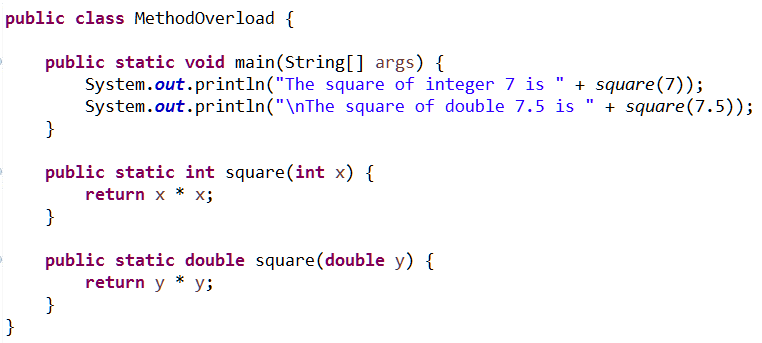---恢复内容开始---
1.编写一个方法,使用以上算法生成指定数目(如1000个)的随机整数。
package 素数; public class RandomNumber { public long a=12345L;//定义long类型的a,b,c变量 public long c=12345L; public long m=456123L; public long r=1; public long rand()//调用纯随机数发生器的函数 { r=(r*a+c)%m; return r; } public static void main(String[] args) { // TODO Auto-generated method stub RandomNumber r=new RandomNumber(); long l; for(int i=1;i<1000;)//输出1000个随机数 { l=r.rand(); System.out.print(l+" "); i++; if (i%5==0)//每输入5个随机数后换行 System.out.println(""); } } }
其运行结果为:

2.请看以下代码,你发现有什么特殊之处吗?

该代码运行结果如下:

特殊之处:
该实例代码展示了”方法重载“的特性,满足以下条件的两个或多个方法构成”重载关系“:1.方法名相同;2.参数类型、参数个数、或参数类型的顺序不同。(其中,方法的返回值不作为方法重载的判断条件)
3.查看JDK中System.out.println()的方法
System.out.println()的JDK源码为:
Prints a String and then terminate the line. This method behaves as
though it invokes <code>{@link #print(String)}</code> and then
<code>{@link #println()}</code>.
@param x The <code>String</code> to be printed.
浏览了一些博客发现,大量使用该语句会造成系统的一些性能受到影响。